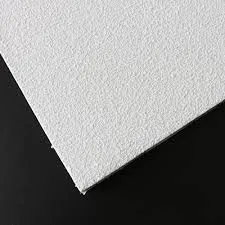- Afrikaans
- Albanian
- Amharic
- Arabic
- Armenian
- Azerbaijani
- Basque
- Belarusian
- Bengali
- Bosnian
- Bulgarian
- Catalan
- Cebuano
- Corsican
- Croatian
- Czech
- Danish
- Dutch
- English
- Esperanto
- Estonian
- French
- German
- Greek
- Hindi
- Indonesian
- irish
- Italian
- Japanese
- Korean
- Lao
- Malay
- Myanmar
- Norwegian
- Norwegian
- Polish
- Portuguese
- Romanian
- Russian
- Serbian
- Spanish
- Swedish
- Thai
- Turkish
- Ukrainian
- Uzbek
- Vietnamese
Ott . 22, 2024 02:59 Back to list
Exploring the Benefits and Applications of Fiber Ceiling Boards in Modern Interiors
Understanding Fiber Ceiling Boards Benefits and Applications
In modern architecture and interior design, the importance of ceiling materials cannot be overstated. Among the various options available, fiber ceiling boards have gained popularity due to their versatility, aesthetic appeal, and functional benefits. This article delves into what fiber ceiling boards are, their advantages, and their applications in both residential and commercial settings.
What are Fiber Ceiling Boards?
Fiber ceiling boards are composite materials made from natural fibers, recycled paper, or other cellulose fibers combined with various binders. This eco-friendly option is designed to provide effective sound absorption and thermal insulation while maintaining a lightweight structure. These boards are available in various designs, textures, and finishes, allowing for customization that meets the demands of any space.
Advantages of Fiber Ceiling Boards
1. Sound Absorption One of the primary benefits of fiber ceiling boards is their excellent soundproofing capabilities. They help in reducing noise transmission within a building by absorbing sound waves, making them ideal for spaces like offices, classrooms, and auditoriums. A well-designed fiber ceiling can greatly enhance the acoustic environment, leading to improved concentration and reduced distractions.
2. Thermal Insulation Fiber ceiling boards provide effective thermal insulation, helping to maintain stable indoor temperatures. By reducing heat transfer, they contribute to energy efficiency, leading to lower heating and cooling costs. This is particularly valuable in regions with extreme weather conditions.
3. Aesthetic Appeal With a wide variety of designs, colors, and textures, fiber ceiling boards can enhance the visual appeal of a room. Whether you prefer a modern, minimalist look or a more classic, intricate design, there’s a fiber ceiling option to suit your style. Their versatility allows for seamless integration into different design themes.
fiber ceiling board

4. Sustainability As environmental concerns grow, many consumers are seeking sustainable building materials. Fiber ceiling boards are often made from recycled materials or renewable resources, making them a responsible choice for eco-conscious homeowners and builders. They also contribute to a healthier indoor environment by using low-VOC (volatile organic compounds) materials.
5. Easy Installation and Maintenance Fiber ceiling boards are lightweight and easy to handle, simplifying the installation process. Additionally, they require minimal maintenance. Regular dusting or cleaning with a damp cloth can keep them looking new, making them practical for busy environments.
Applications in Residential and Commercial Settings
Fiber ceiling boards are suitable for a variety of applications, ranging from residential living spaces to commercial settings. In homes, they are commonly used in living rooms, dining areas, and home theaters to improve aesthetics and acoustics. In commercial buildings, you will find them in offices, schools, healthcare facilities, and retail spaces where comfort and noise control are essential.
Furthermore, these boards can be used creatively in design projects, such as in feature ceilings or as wall paneling to provide a cohesive look throughout a space.
Conclusion
In summary, fiber ceiling boards represent a blend of functionality, aesthetics, and sustainability in interior design. Their sound absorption properties, thermal insulation capabilities, and eco-friendly materials make them an excellent choice for both residential and commercial applications. As the demand for innovative building materials continues to rise, fiber ceiling boards are poised to remain a popular choice for creating comfortable and visually appealing environments. Whether you are renovating an existing space or constructing a new one, consider the numerous benefits of fiber ceiling boards for your next project.
-
Transform Interiors with PVC Gypsum Ceiling: A Stylish, Durable, and Moisture-Resistant SolutionNewsMay.19,2025
-
The Smart Interior Upgrade: Discover the Durability and Versatility of Gypsum Ceiling Access Panel SolutionsNewsMay.19,2025
-
The Smart Choice for Interior Design: Discover the Value of PVC Gypsum Ceiling SolutionsNewsMay.19,2025
-
Mineral Fiber Ceiling Tiles: The Smart Blend of Performance and AestheticsNewsMay.19,2025
-
Mineral Fiber Ceiling Tiles: The Superior Choice Over Gypsum for Sound and Fire SafetyNewsMay.19,2025
-
Mineral Fiber Ceiling Tiles: Eco-Friendly Strength and Style for Every CeilingNewsMay.19,2025







